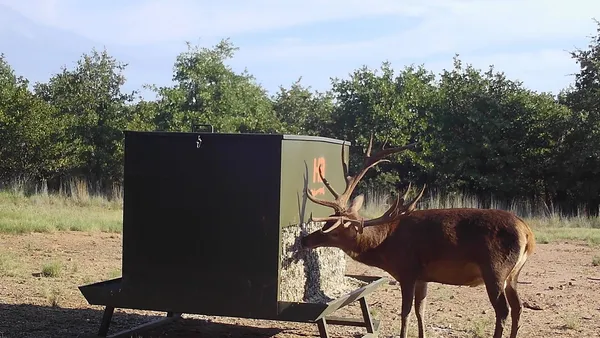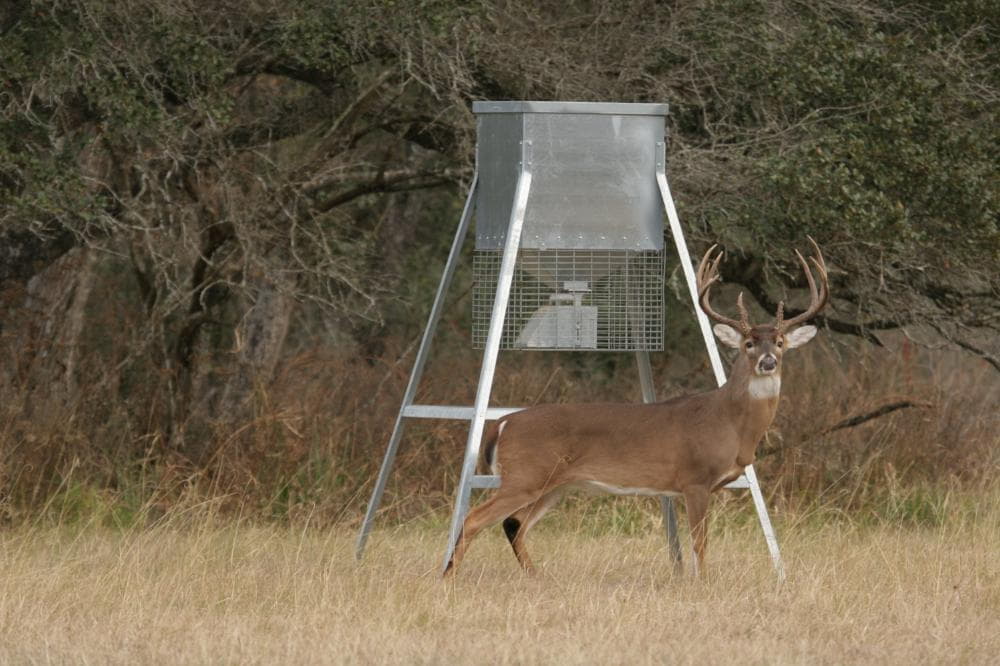Deer feeding has become popular among hunters and landowners to attract deer to specific areas. But until now, they still argue with each other about “How high should a deer feeder be off the ground?”. Because the placement of the deer feeder affects deer accessibility, minimizing interference from other wildlife and promoting safe feeding practices.
In this article, we will explore the optimal height for a deer feeder and the factors that affect feeder placement. Whether you are a professional deer feeder or just starting out, understanding the importance of feeder height will contribute to a successful and sustainable feeding program.
Let’s scroll down to read the full article!
Table of Contents
Factors to Consider when Determining Deer Feeder Height
To determine the ideal height for a deer feeder, you need to consider three main factors:
1. Species of deer in your area
Different species of deer have different eating habits. For instance, white-tailed deer, commonly found in North America, are known for their adaptability. White-tailed deer have the ability to feed at different heights, whether on the ground or elevated vegetation.
On the other hand, mule deer, predominantly found in Western regions, have a preference for browsing shrubs and plants closer to the ground. Their feeding habits make ground-level feeders more suitable, as they are accustomed to grazing in low-lying areas.
To sum up, understanding the specific feeding behaviors of the deer species in your area is crucial in determining the appropriate height for deer feeders.
2. Accessibility for deer
Ensuring that deer have easy access to food is essential to successful deer feeding. Factors such as age, physical condition, and antler size can affect a deer’s ability to access feeders at different heights. Young or injured deer may have difficulty accessing an overhead feeder, while older deer with large antlers may have a challenge with a lower feeder.
So, you should strike a balance that works for most deer in your area.
3. Protection from other wildlife
Feeder height can also play a role in deterring “unwanted guests” such as raccoons or squirrels. Placing the feeder at the right height can make it harder for these animals to reach, reducing the risk of food theft or damage to the feeder.
The key is to find a balance that allows deer access to the feeder while minimizing interference from other wildlife.

Recommended Heights for Deer Feeders
The decision “How high should a deer feeder be off the ground?” depends on many factors which will be explored in this section. However, before considering the factors, it is important to understand the benefits of placing feeders at specific heights.
- Ensure optimal accessibility for deer
By setting the feeder at an appropriate height, deer can easily reach the food, promoting efficient feeding and reducing potential stress or physical strain.
- Minimize interference from other wildlife
Elevating the feeder off the ground can deter smaller mammals and ground-feeding birds, such as raccoons and squirrels, from accessing the feed intended for deer.
- Enhance visibility for deer, especially in areas with dense vegetation
By raising the feeder, it becomes more conspicuous to deer, making it easier for them to locate and access the feed. This can be particularly advantageous in environments where forage may be limited or obscured by dense foliage.
As a result, when it comes to feeder height, there are two primary options: ground-level feeders and elevated feeders. Each has its advantages and disadvantages.
1. Ground-level feeders
Placing feeders directly on the ground can have natural feeding conditions and make it easier for deer to access the food. Ground-level feeders are particularly suitable for species like mule deer that typically feed closer to the ground. This setup also allows for easy maintenance and reduces the risk of feeders becoming top-heavy or unstable. However, keep in mind that ground-level feeders may attract other wildlife, such as raccoons or rodents, which can deplete the feed intended for deer.

2. Elevated feeders
Elevating the feeder off the ground offers several benefits. It helps minimize interference from other wildlife, including smaller mammals and ground-feeding birds. Elevated feeders are also advantageous for areas with dense vegetation, as they make it easier for deer to locate the feed. When considering an elevated feeder, the height should be carefully chosen. Generally, a height of 4 to 6 feet is recommended. Generally, 4 to 6 feet is the ideal height for a deer feeder. This ensures deer access and prevents interference from wildlife.
Read this post: The Easiest Way on How to Make a Deer Feeder

Best Practices for Feeder Placement
To ensure successful and smooth deer feeding, it’s important to follow some feeder best practices.
1. Prioritizing safety
Prioritize the safety of both deer and humans when locating feeders. Avoid placing feeders too close to roads or other high-traffic areas, because it can increase the risk of deer-vehicle collisions. Also, make sure that the feeders are securely installed to prevent accidents from tipping or tipping over.
2. Adjusting the feeder height
Monitoring deer behavior and adjusting the feeder height accordingly is important. Observing how deer feed and their ease of access can provide insight into whether the current feeder height is appropriate. If deer have difficulty accessing food or if other wildlife constantly interrupts feeding, consider adjusting the height accordingly.
Conclusion
Finding the right height for the deer feeder is essential to support the feeding habits and preferences of the local deer. Considering factors such as species, accessibility and protection from other wildlife will guide you in making an informed decision about feeder location. Whether you choose ground or elevated feeders, striking a balance between deer accessibility and minimizing interference from other wildlife is the key to a successful deer feeding program. By implementing best practices and regularly monitoring feeding, you can create a safe and sustainable environment that benefits both the deer and the entire ecosystem.

